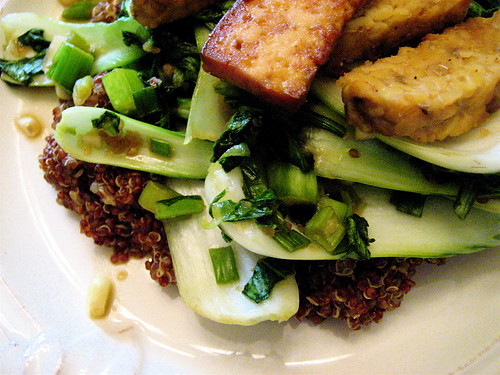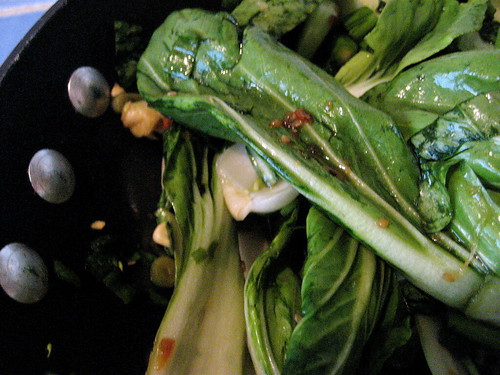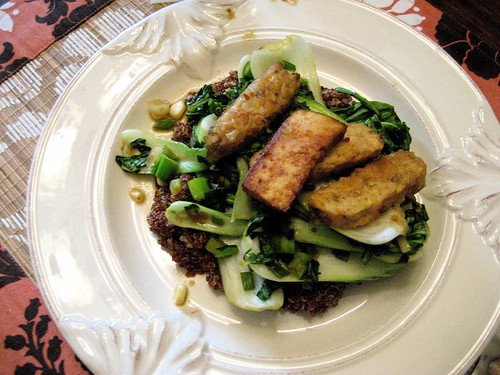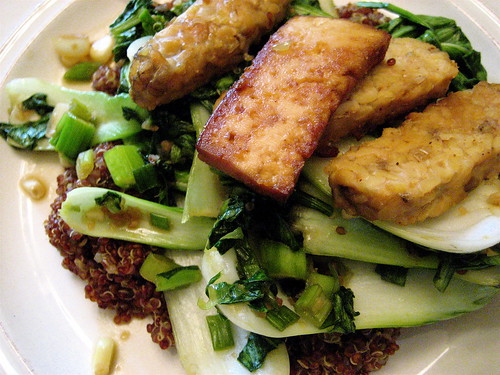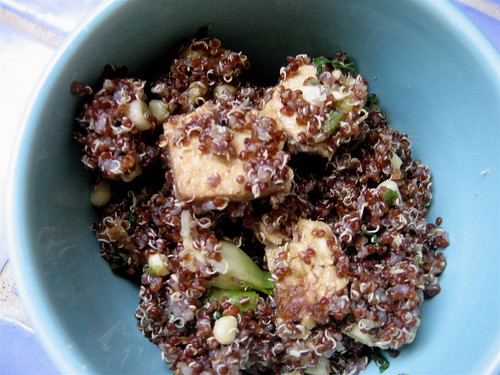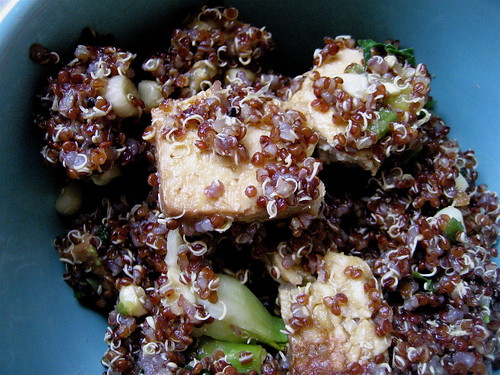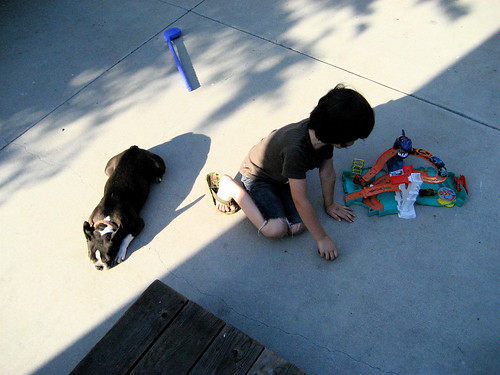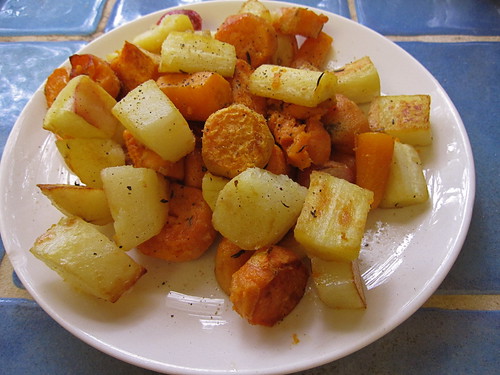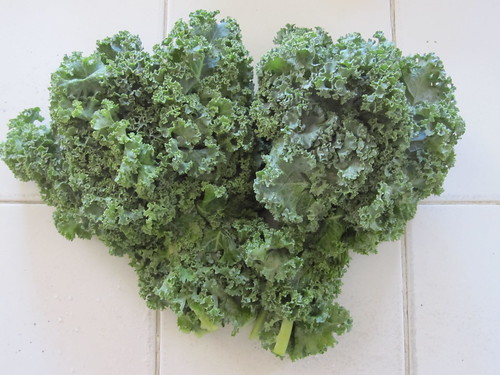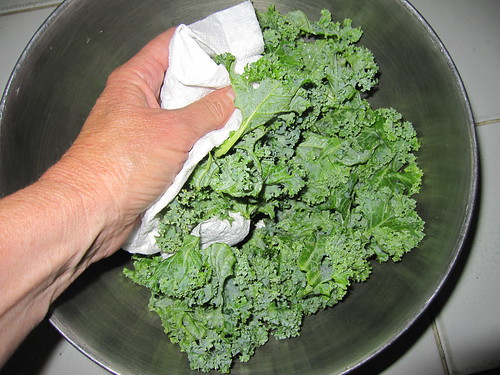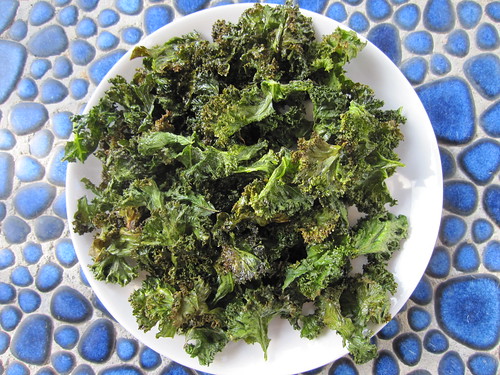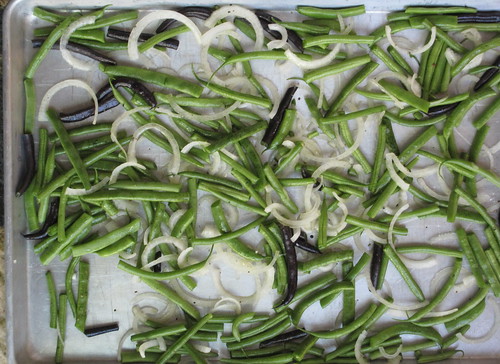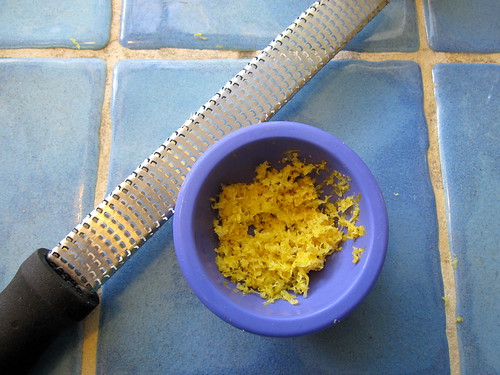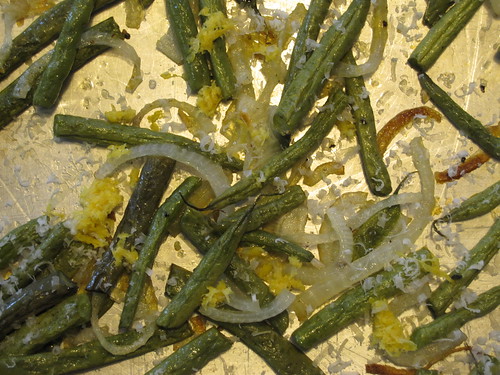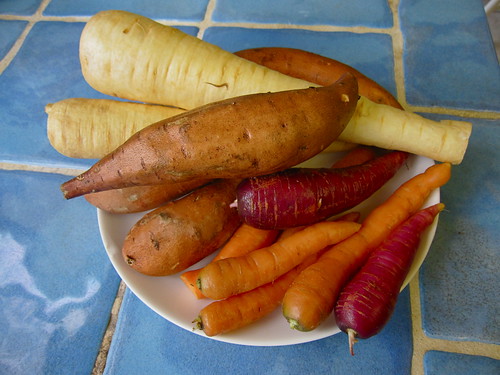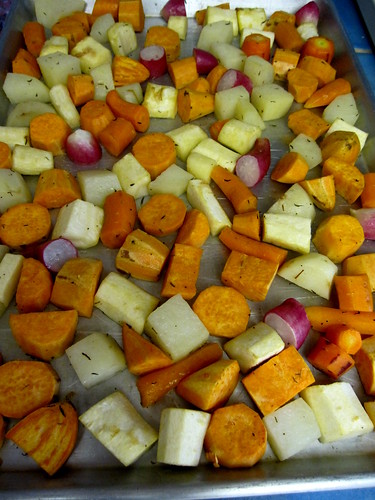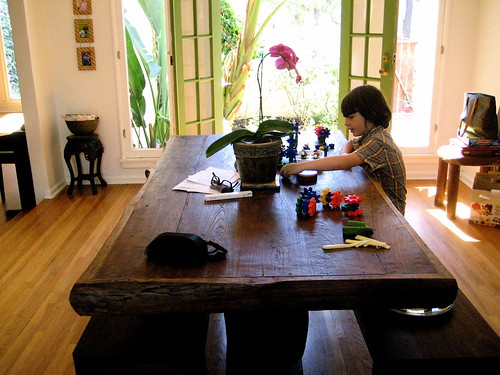When Rebecca was twelve, she burst into the house after school one day and announced dramatically that she would “Never eat meat again!!” I wasn’t all that surprised, really. She had been an animal lover since she was small, secretly rescuing snails I had bagged and thrown into the garbage and placing them back onto my plants. This fateful day, however, her Foods teacher had shown the class a movie called “
Diet for a New America,” the first movie to my knowledge that exposed the atrocities of the Factory Farm, or the CAFOs (Confined Animal Feeding Operations) as they are called by the government. She told me in graphic detail what she had learned but I put my fingers in my ears and didn’t want to hear the message. Although my most beloved cookbook was
Moosewood Cookbook by
Mollie Katzen, the cult vegetarian cookbook of the 70’s, I still thought of meat as the main course and would plan my meals around what meat or fish I had bought for the night. I accepted and supported Rebecca’s decision, but I wasn’t going to make the same choice for the rest of the family. I also reasoned that the meat from the factory farms must be the really cheap meat, the fifty-nine cents a pound chickens and inferior grades of meat. I had driven across the country and had seen cattle grazing so I falsely assumed that those cattle were the ones WE were eating. Little did I know that those cows, too, were destined for the factory farm.
My decision to stop eating meat a couple of years ago was based on several simultaneous occurrences. An undiagnosed auto-immune condition lead me to several doctors of alternative medicine, and although they had different remedies, the one constant in their prescribed therapies was their recommendation to cut down or discontinue meat and dairy consumption. At the same time I was trudging from doctor to doctor, I read
The Omnivore’s Dilemma and then
The China Study. Between Michael Pollen’s descriptions of The Factory Farm and T Collin Campbell’s overwhelming evidence that animal protein acts as fertilizer for Western diseases, something clicked in my brain and I no longer could eat meat. This was a huge life change for me, especially since my favorite two foods since I had been little were lamb chops and rare roast beef. Larry sweetly decided to join me in my new diet as he had never particularly loved eating meat, anyway--but mostly, because he's the most supportive husband a girl could ever have. I jumped into our new life with a mixture of excitement and fear and over the past two years have developed a philosophy about how to enjoy, and prefer, a meatless existence, especially as a carnivore. (For those of you who eat meat and dairy but are looking for humanely raised sources, I suggest
this website.)
I hope these tips will be helpful to those of you who might be thinking of taking the plunge into the wonderful world of a meatless diet:
1. Be authentic: Let the vegetables and whole grains take center stage and resist using processed meat or dairy substitutes. These pretenders don’t taste good and are highly processed. Vegetables, beans and grains, when cooked correctly, are amazing in their own right. Learn how to cook them so they shine!
2. Eat from the rainbow: By this I mean all different colors and types of vegetables, grains and beans, trying new ones and serving several at each meal. We don’t need protein, we need amino acids (the building blocks of protein) and by eating many different whole foods, you get all the amino acids you need to build your proteins. It is actually more efficient to make protein this way…when you eat meat, your body has to break down the protein into its individual amino acids in order to digest them. That’s why you get sleepy after a big meat-laden dinner!! I like belonging to a CSA--community supported agriculture--where you get a box of vegetables every week from a local farm. Many people don’t like the idea of getting a random box of vegetables because you don’t know what you are getting from week to week, but this is the very reason I love my CSA—I am forced to try new vegetables and stimulates me to be a more creative cook. (I will talk more about this in a future post).
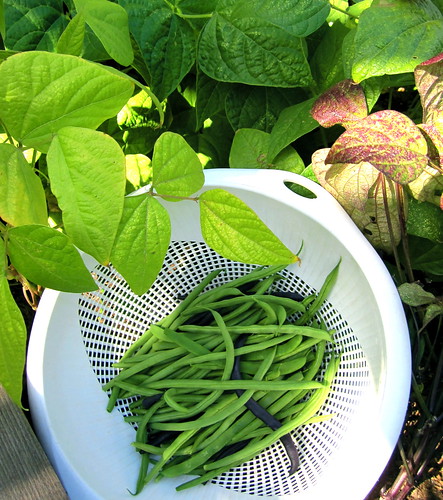
3. Don’t replace meat with carbs. Instead, cook more vegetables and serve carbs as a side dish.
4. Go through your cookbooks that you already have and mark which recipes work for you or that can be modified.
6. Use the internet as a source for new recipes. (Hello!)
7. Add
umami to your meals and use foods high in umami to satisfy your meat cravings. Umami is the 5th taste and is the essence that we crave in meat. Foods high in Umami are seaweed, mushrooms (dark such as portabella, crimini, porcini, or shitaki), potatoes and sweet potatoes, tomatoes, parmesan cheese (and other aged cheeses), green tea, cornmeal, carrots, vinegar, eggs, fish sauce, miso, soy sauce or liquid Braggs, ketchup, truffle oil, red wine, buttermilk, peas, asparagus, capers, beans, red peppers, pine nuts, sunflower seeds, walnuts, almonds, goat milk and goat milk products, and winter squashes. (More on this, too, in the future!)
Roasting elevates a vegetable to a level of ecstacy not experienced by any other cooking method, magically creating robust flavor, even in the most humble of vegetables. Adding parmesan cheese, goat cheese, or balsamic vinegar after they are roasted further increases the savory richness (umami) and satisfies all of my meat cravings.
When roasting vegetables, it is VERY IMPORTANT not to crowd the pan. Make sure they are in a single layer or else they will steam, not roast. You can use two pans if needed.
Also, cut the veggies into uniformly sized pieces so they cook evenly.
Here are some of my favorite roasted vegetable recipes:
***
Crispy Kale
One of our favorite before dinner snacks. Kids love these...they are crunchy and you would never know they are made from kale! You can also fry the kale but it uses more oil (
Here is a funny article in the NY Times about cooking fried kale with a 4 year old!)
4-6 cups kale, shredded and thick stems removed (I like curly kale best. See below.)
2 T olive oil
Sea salt
Optional shredded parmesan cheese
curly kale
Preheat oven to 350. Wash kale and spin in a salad spinner until dry. Roll in towels to get completely dry (crispness depends on this!)
Remember to dry well before drizzling oil.
Cut out thick stems and tear into bite-sized pieces. Drizzle oil over kale in a bowl and toss with your fingers until coated. Spread out on parchment lined cookie sheet (don’t bunch up) and bake for 12-20 minutes or until crisp.
remember not to crowd kale.
Watch that these don’t brown as they can get bitter (although, I like them like that, too!) Keep checking to make sure they are crisp (you can squeeze the leaves with a pair of tongs to check). When they are crisp, take out and sprinkle with salt and/or Parmesan cheese. Serve as a snack or sprinkle on other dishes to add a wonderful flavor and crunch.
For variation, toss with your favorite seasonings after they are crisp, or even a little sugar with the salt can be scrumptious! Yum!
***
Roasted Green Beans
1 pound green beans
1 onion, thinly sliced
1-2 T olive oil
salt and pepper to taste
the zest of one lemon
freshly grated parmesan cheese (buy a good quality aged parmesan to increase umami)
Preheat oven to 450. Cut beans into 2 inch pieces. Put in a pan with sliced onions and toss with the olive oil, salt and pepper. (Make sure the vegetables aren’t crowded and are in a single layer).
Roast for 10-15 minutes, or until the beans start to shrivel and the onions are getting crisp. Sprinkle with lemon zest and freshly grated Parmesan cheese. Serve immediately. These go GREAT with
Persian eggs and actually, any dish.
zest!
You can substitute alone or combined, asparagus, Brussel sprouts, asparagus, cauliflower, or broccoli. You can also substitute goat cheese or feta for the Parmesan cheese and toss with walnuts, pine nuts, or almonds. Great herbs to be added with the oil at coking time are thyme or rosemary. Once you start getting in the habit of roasting vegetables, it is fun to come up with different combinations.
(For those of you who don’t like cooked cauliflower, try roasting them! I have served these to cauliflower haters and converted them to lovers!)
***
Roasted root vegetables
Any combination of the following: carrots, parsnips, sweet potatoes, potatoes, and winter squash cut into 1-2 inch pieces.
1-2 T olive oil
salt and pepper to taste
optional: garlic salt or dried herbs of your choice (I like thyme)
Coat vegetables with oil and sprinkle with salt and pepper. Put in single layer in pan and roast at 450 for 20- 25 minutes, turning once with spatula.
Serve plain or sprinkle with any aged cheese
(yummy with blue, especially if using sweet potatoes!!)
***
The Most Delicious Potatoes Ever
Any potatoes (including sweet) or a combo of them (cut the potatoes one inch pieces)
½ onion, finely chopped
1 pepper finely chopped (I like Anaheim)
Toss with oil and salt and pepper. Cook until brown at 500 degrees, about 10 minutes.
Any vegetable is amazing roasted! Try them all and be creative. Turnips and radishes are delicious. Try something new such as celeriac or Jeruselum artichokes (sun choke--these are amazing, by the way!!) Parsnips are like ambrosia roasted…can’t get enough of them. A heaping pile of roasted vegetables served with a grain and a salad is one of our favorite and simple meals. Add Balsamic vinegar after roasting
.
Ok…must go now… My mouth is watering so much, I need to roast me some vegetables!
WWW for GGC





